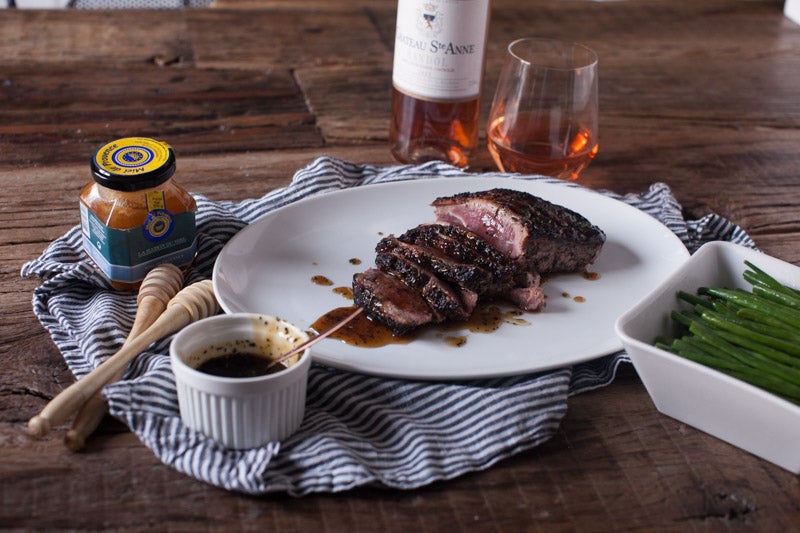
Forget about wine. Honey is what you should be bringing home from France in your suitcase.
Last summer, I spent six weeks discovering the Var, a beautiful region in the center of the Provence-Alpes-Côte d’Azur in the South of France. We rented a villa in a tiny village called Montfort-sur-Argens, surrounded by olive trees and lavender fields on a hill overlooking vineyards. Every few days, I grabbed my straw basket and drove to a marché, a farmers’ market, in one of the neighboring villages. I loved leisurely strolling through the maze of vendors lining the streets. I was constantly lured in by the tables stacked high with truffles, nougat, tapenades, pistous, olive oil, and, most of all, the miel (honey).
At home in Paris I always have a plastic squeezable jar of honey in the cupboard, ready for tea when my throat hurts. Before the markets of the Var, I never thought too much about the variety, or where it came from. However, the small glass jars at the farmers’ market filled with various shades of gold and amber were like little jewels to me. I learned that there are approximately 4,500 beekeepers in the region producing different types of honey, thanks to the region’s wide range of vegetation and species of flowers. I tasted flavors I never imagined existed: clementine honey, lavender honey, thyme honey, rosemary honey, chestnut honey, acacia honey, and buckwheat honey. Honey is serious business here—it even gets special attention with a museum and a yearly festival dedicated to the sweet nectar.

I, too, became obsessed. Every morning I slathered honey on buttered toast like the locals, folded it into crepes, added a spoonful to my yogurt, and mixed it into marinades or sauces. At restaurants I couldn’t pass up dishes made with rich honey sauces, especially when they were poured over magret de canard (duck breast), which became another infatuation of mine.
Like honey, falling for duck was a surprise. Before moving to France from America, I had never tasted it. The only time I even saw the bird was at fancy Chinese restaurants in the form of crispy Peking duck. In France, duck is not a rarity. It turns up at nearly every bistro, brasserie and restaurant. A few years ago on a weeklong trip to Dordogne in southwest France, I finally gave in because I couldn’t escape the duck. Driving between towns and villages to explore, there were signs pointing toward the nearest duck farms. Restaurants and vendors proudly offered their finest duck delicacies, which I was hesitant to taste. I saw foie gras, duck paté, duck salads, duck hash, duck wings, fried duck and duck tartare. After several days I couldn’t resist any longer. It was love at first bite, and I have never looked back.
Life abroad is all about discovery. This combination—seared duck breast drenched in warm wildflower honey—continues to be my current favorite, handily taking me dinner party by dinner party from summertime to deep into fall.
